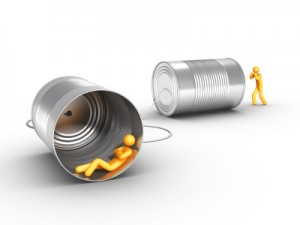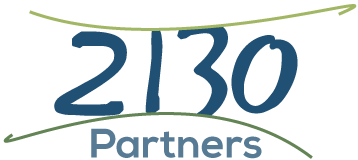 Let's talk about a set of ideas we have been evolving for several years that we call Lean Conversations. The fundamental notion is that academicians, consultants, leaders, and managers in our culture have focused on and accomplished tremendous gains in productivity through process improvement, supply chain management, IT, and a host of manufacturing concepts including Lean Manufacturing. The area that has been largely overlooked as an opportunity for improvement in productivity is the friction and waste that occurs in the conversations people have with each other as they go about their daily work together. By friction and waste we mean the upsets, resistance, broken promises, undelivered communications, failed intentions, etc., etc. (You get the picture.)
We have long believed the single biggest key to productivity gains in our economy today is to identify and clear upsets, first in ourselves, and then in others. Over many years with our clients we have conducted a sort of "informal qualitative survey," by asking them, " if people in your organization just came to work, did their jobs, and went home without having upsets, issues with each other, their work, etcetera, what time could you go home?" Consistently we would hear they could go home between 10:30 and 11:00 a.m. This answer used to surprise us until we heard it over and over
Let's talk about a set of ideas we have been evolving for several years that we call Lean Conversations. The fundamental notion is that academicians, consultants, leaders, and managers in our culture have focused on and accomplished tremendous gains in productivity through process improvement, supply chain management, IT, and a host of manufacturing concepts including Lean Manufacturing. The area that has been largely overlooked as an opportunity for improvement in productivity is the friction and waste that occurs in the conversations people have with each other as they go about their daily work together. By friction and waste we mean the upsets, resistance, broken promises, undelivered communications, failed intentions, etc., etc. (You get the picture.)
We have long believed the single biggest key to productivity gains in our economy today is to identify and clear upsets, first in ourselves, and then in others. Over many years with our clients we have conducted a sort of "informal qualitative survey," by asking them, " if people in your organization just came to work, did their jobs, and went home without having upsets, issues with each other, their work, etcetera, what time could you go home?" Consistently we would hear they could go home between 10:30 and 11:00 a.m. This answer used to surprise us until we heard it over and over  again. Let’s allow for gross overstatement and cut that savings in half. Even with this modification it appears there is at least two to four hours of time savings available for the leaders, (and presumably everyone else in the organization), if there were less upsets, less confusion and fewer issues in people's interactions with each other. Bottom line, this means ther are potentially enormous opportunities for gains in productivity right in front of us, largely unnoticed, (or framed in that way), and largely unleveraged.
again. Let’s allow for gross overstatement and cut that savings in half. Even with this modification it appears there is at least two to four hours of time savings available for the leaders, (and presumably everyone else in the organization), if there were less upsets, less confusion and fewer issues in people's interactions with each other. Bottom line, this means ther are potentially enormous opportunities for gains in productivity right in front of us, largely unnoticed, (or framed in that way), and largely unleveraged.
We have written a white paper on this subject which we are making available as a free download in this blog post and, (which we will also post on our website in the Articles section), with ideas as to how you can get started reducing the friction and waste in the conversations in your organization.
We invite you to get your free download here [Download].pdf, study it, and take on the practices that most apply to you. Please comment on this post, add to our ideas in the white paper and let us know what you think. Let’s start an open source movement for Lean Conversations!

 I had a further conversation with
I had a further conversation with  5) There are few best practices for conversations that lead to highly productive interactions. For example, it’s easy to observe a group of people behaving in a continuous "fire-fighting" mode and we have a term for it. It’s less clear in every day shared language what the descriptor is for highly productive group interactions.
5) There are few best practices for conversations that lead to highly productive interactions. For example, it’s easy to observe a group of people behaving in a continuous "fire-fighting" mode and we have a term for it. It’s less clear in every day shared language what the descriptor is for highly productive group interactions.